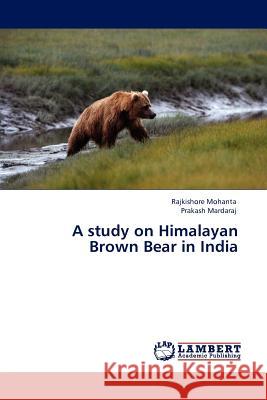A study on Himalayan Brown Bear in India » książka
A study on Himalayan Brown Bear in India
ISBN-13: 9783845413174 / Angielski / Miękka / 2011 / 104 str.
Among the four species of bear in India, the Himalayan brown bear (Ursus arctos) is least distributed and occurs in very low densities in the alpine region of the Greater and Trans Himalayan zones in India. It is rare and usually encountered between 2800m to 4800m elevation. Population of brown bear is largely confined to the western and northwestern Himalayan regions in India and distributed mainly in the states of Jammu and Kashmir, Himachal Pradesh, Uttaranchal and Sikkim. Schaller (1969) stated that the Himalayan brown bear is largely confined to rolling uplands and high forests of fur-spruce and alpine pastures.Due to increasing human population, expansion of agricultural land, livestock grazing pressure and collection of medicinal plants, both brown bear and black bear populations are disturbed and threatened. Forests, pastures and wastelands have been brought under cultivation to sustain increased demand of cereals and other food products . The unsustainable land-use patterns in rural areas have further altered the landscapes. As a result of the habitat modification, certain wildlife species have become ecological dislocate.
Among the four species of bear in India, the Himalayan brown bear (Ursus arctos) is least distributed and occurs in very low densities in the alpine region of the Greater and Trans Himalayan zones in India. It is rare and usually encountered between 2800m to 4800m elevation. Population of brown bear is largely confined to the western and northwestern Himalayan regions in India and distributed mainly in the states of Jammu and Kashmir, Himachal Pradesh, Uttaranchal and Sikkim. Schaller (1969) stated that the Himalayan brown bear is largely confined to rolling uplands and high forests of fur-spruce and alpine pastures.Due to increasing human population, expansion of agricultural land, livestock grazing pressure and collection of medicinal plants, both brown bear and black bear populations are disturbed and threatened. Forests, pastures and wastelands have been brought under cultivation to sustain increased demand of cereals and other food products . The unsustainable land-use patterns in rural areas have further altered the landscapes. As a result of the habitat modification, certain wildlife species have become ecological dislocate.











